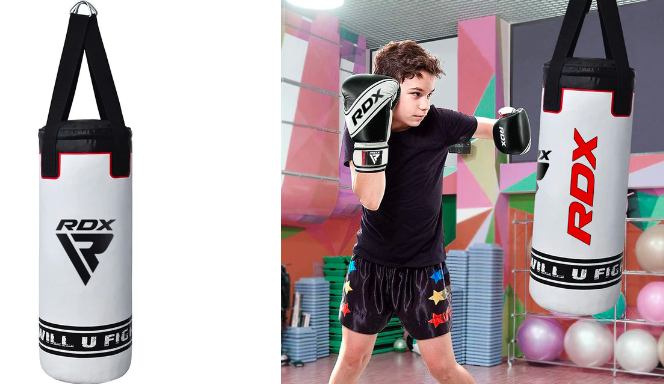Punch bags, also known as punching bags, are essential equipment in combat sports, martial arts, and fitness training. They are versatile tools that offer a wide range of benefits, including improved strength, endurance, and technique. In this comprehensive guide, we'll explore everything you need to know about punch bags, from their types and benefits to how to use them effectively.
1. Introduction to Punch Bags
Punch bags are sturdy bags filled with materials such as sand, cloth, or water. They come in various shapes and sizes, each serving different purposes. Punch bags are used for practicing punches, kicks, and other striking techniques, making them an essential tool for boxers, martial artists, and fitness enthusiasts.
2. Types of Punch Bags
There are several types of punch bags, each designed for specific purposes:
- Heavy Bags: Heavy bags are large, cylindrical bags filled with dense materials like sand or cloth. They are designed to withstand heavy punches and kicks, making them ideal for strength and power training.
- Speed Bags: Speed bags are small, air-filled bags attached to a platform. They are used primarily for developing speed, timing, and hand-eye coordination.
- Double-end Bags: Double-end bags are small, oval-shaped bags suspended between two mounts. They are utilized to enhance precision, timing, and reflexes.
3. Benefits of Using Punch Bags
Using a punch bag offers numerous benefits for both physical and mental health:
- Strength and Conditioning: Punching and kicking a bag help build strength and endurance in the upper body, core, and legs.
- Stress Relief: The rhythmic action of hitting a bag can help reduce stress and improve mood.
- Cardiovascular Fitness: Working out with a punch bag provides an excellent cardiovascular workout, improving heart health and stamina.
- Improved Technique: Practicing on a punch bag can help improve punching and kicking techniques, leading to better performance in combat sports.
4. How to Choose the Right Punch Bag
When choosing a punch bag, consider the following factors:
- Size and Weight: Choose a bag that suits your training goals and physical abilities. Heavy bags range from 60 to 150 pounds, with larger bags providing more resistance for strength training.
- Material: Punch bags are made from materials like leather, vinyl, or canvas. Leather bags are durable but expensive, while vinyl bags are more affordable but less durable.
- Hanging vs. Free-standing: Decide whether you want a punch bag that hangs from a ceiling or a free-standing bag that can be moved around.
- Filling: Some punch bags come prefilled, while others require you to fill them yourself with materials like sand or water.
5. Setting Up a Punch Bag
Setting up a punch bag requires careful consideration to ensure it is safe and effective for your workouts. Here's a step-by-step guide to setting up a punch bag:
- Choose the Right Location: Select a suitable location for your punch bag. Ideally, it should be in a spacious area with enough clearance around the bag for movement.
- Install a Mounting Bracket: If you are hanging the punch bag from a ceiling, install a heavy-duty mounting bracket securely into a ceiling joist or beam. Use the correct hardware and adhere to the manufacturer's guidelines.
- Hang the Punch Bag: Attach the punch bag to the mounting bracket using the provided chains or straps. Ensure the bag hangs at the correct height for your training. A general guideline is to position the bag at a height that allows you to strike it with your fists at shoulder level.
6. Proper Technique for Using a Punch Bag
Proper technique is essential when using a punch bag to avoid injury and maximize the effectiveness of your workout:
- Keep your elbows bent and fists clenched.
- Use your whole body to generate power in your punches and kicks.
- Move around the bag to practice footwork and positioning.
- Don't overextend your punches or kicks, as this can lead to strain or injury.
7. Safety Tips for Using Punch Bags
To prevent injuries when using a punch bag, follow these safety tips:
- Warm-up: Always warm up before using a punch bag to prevent muscle strains and injuries.
- Use Proper Padding: Wear hand wraps and gloves to protect your hands and wrists.
- Stay Hydrated: Ensure to hydrate adequately by drinking water before, during, and after your workout.
- Take Breaks: Don't overexert yourself. Remember to pause between rounds to allow for proper rest and recovery.
- Listen to Your Body: Stop exercising if you feel pain or discomfort.
8. Maintenance and Care of Punch Bags
To ensure your punch bag lasts long, follow these maintenance tips:
- Clean Regularly: Wipe down your punch bag with a damp cloth after each use to remove sweat and dirt.
- Check for Wear and Tear: Inspect your punch bag regularly for any signs of damage or wear, such as leaks or tears.
- Avoid Excessive Force: Do not use excessive force or sharp objects on your punch bag, as this can damage it.
- Store Properly: When not in use, store your punch bag in a dry, cool place away from direct sunlight.
9. Conclusion
In conclusion, punch bags are a valuable tool for anyone looking to improve their fitness, strength, and technique. By incorporating punch bag training into your workout routine, you can enjoy a challenging and effective workout that helps you reach your fitness goals.



No comments yet